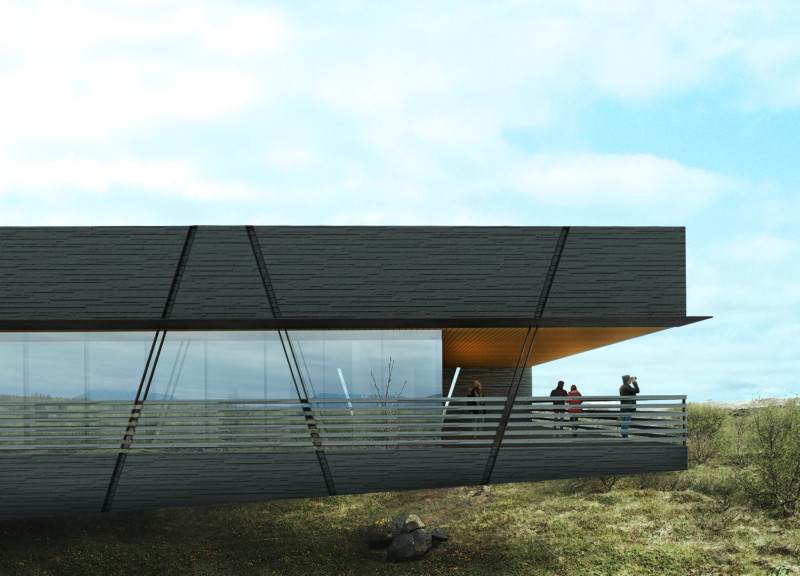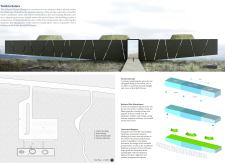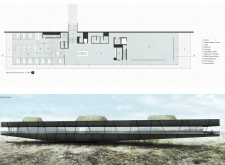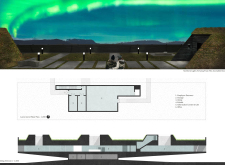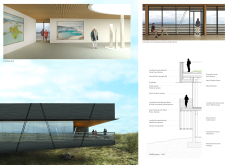5 key facts about this project
The museum consists of three primary longitudinal forms aligned along an East-West orientation. This configuration maximizes the influx of natural light into the exhibit spaces and provides panoramic views of the iconic Hverfjall Volcano, enhancing the overall visitor experience. The design integrates functional areas, including exhibition halls, a café, and administrative offices, arranged to facilitate movement while minimizing environmental disruption.
Unique Design Approaches
A noteworthy aspect of the Iceland Volcano Museum is its use of locally sourced materials, particularly basalt stone, which reflects the geological context of the site. This choice not only provides durability but also establishes a sense of place. The project employs a green roof system, which integrates plant life into the architecture, further connecting the structure with its environment while enhancing energy performance.
The architectural design prioritizes an immersive visitor experience through the deliberate organization of spaces and the strategic placement of windows. Triple-glazed windows are utilized to ensure thermal efficiency, allowing for expansive views without compromising interior climate control. The interior spaces are designed to provide a dynamic flow, encouraging exploration and engagement with various exhibits related to volcanic activity.
Structural Elements and Layout
The museum's structural composition includes wood stud framing and a steel framework, which contribute to its overall stability and aesthetic appeal. The design capitalizes on the sloping terrain, with the building’s heights varying to mimic the rise of surrounding topography. This approach not only provides visual interest but also facilitates site drainage and ecological integration.
In summary, the Iceland Volcano Museum exemplifies principles of contextual architecture through its site-sensitive design and material selection. The project serves an educational purpose while fostering a deep connection with the geological history of Iceland.
To gain further insights into this project, readers are encouraged to explore the architectural plans, sections, and designs that detail its innovative features and functional layout. A closer examination of these elements will provide a comprehensive understanding of the architectural ideas that underpin this significant cultural institution.


